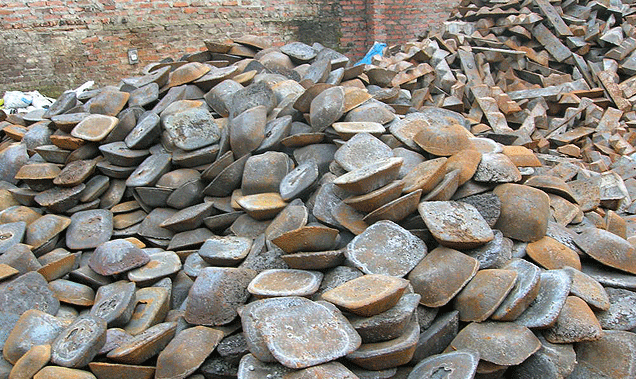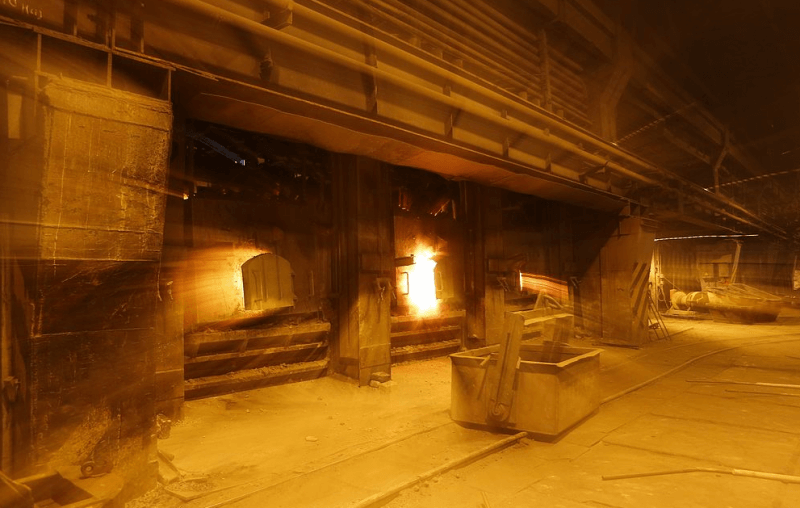Pig Iron Manufacturing Process

At the beginning of the use of the electric furnace, for the manufacture of calcium carbide and ferro-alloys, experimental work was conducted in it upon the production of steel from iron ore. For many years steel and wrought iron have been produced directly from ore on a small scale in the forge, crucible, and reverberatory […]
Oil Burning Systems of Liquid Fuels
Oil burners, oil furnaces, and methods of installation, have been the subject of many articles, but information concerning oil-burning systems, based upon scientific principles, is still in great demand, especially in the manufacturing districts of our country. Fuel oil, as it is termed (this being the residuum from oil refineries), has for many years been […]
Heat Treatment of Steel Castings
In an effort to employ cast steel of a stronger structure than that found in the annealed steel castings, the possibilities of heat treatment which will increase the strength without materially decreasing the ductility may be resorted to. The following abstracted report (which is a brief outline of what has already been done by the […]
Vacuum Melting Of Low Alloy Steel
The effect of vacuum melting on the elimination of gases and nonmetallic inclusions for six low-alloy steels was investigated. The purpose of these studies was the analysis and comparison of differences in gas content and inclusions in air-melted and vacuum-melted steel. Data obtained from melts of 1-¼ to 20 pounds indicate that vacuum melting decreases […]
High Melting Point Metals Casting Furnace
A laboratory furnace was developed for use in studying the interrelationships among variables associated with skull melting and casting high-temperature metals. Although additional work is necessary to determine the extent to which the information obtained by using this furnace can be extrapolated to larger furnaces of the same type, many casting characteristics of metals and […]
Reverberatory Smelting

In reverberatory smelting, fuel is the chief item of expense, as it commonly is in processes using large percentages of it. Hence the most suitable supply is eagerly sought; that is, the supply which, in the end, yields the greatest net profit. The better grades are not infrequently bought, even at an advanced price, because […]
How to Generate Steam Energy from Furnace Waste Heat
Technical progress takes place in two directions: the improvement of methods, affecting the quality of the product; and increase in the economy of operations, affecting its cost. In the iron-industry, practice is pretty well settled, and revolutionary changes of method are, for the present, not to be expected. Hence, in this industry, the principal endeavor […]
Copper Smelting Furnace
The early development of the reverberatory furnace for smelting copper ores was the work of the Welsh smelters, particularly those of Swansea. The first record of a reverberatory furnace is made by Jars, who states that copper-smelting was effected in reverberatory furnaces at Middleton-Tyas, in Yorkshire, England. The first patent, of any importance, for improvements […]
Chloridizing Leaching
Outline of the Chloridizing Leaching Process: The Mines Operating Co.’s plant at Park City, Utah, was designed to treat the low-grade fillings in the old stopes of the Ontario mine. These fillings carry 6 to 14 oz. of silver, 1 to 2 lb. copper, 0.01 to 0.015 oz. of gold, and a small percentage of lead […]
Electrolytic Refining: Silver – Gold – Copper
The refinery takes the bullion purchased by the receiving department, and carrying more than 200 parts of precious metals in 1,000, or, in mint parlance, over 200 fine, and separates and refines the various metals contained therein, using electrolytic processes exclusively. Bullion containing silver is treated in cells charged with a nitric electrolyte. These cells […]
